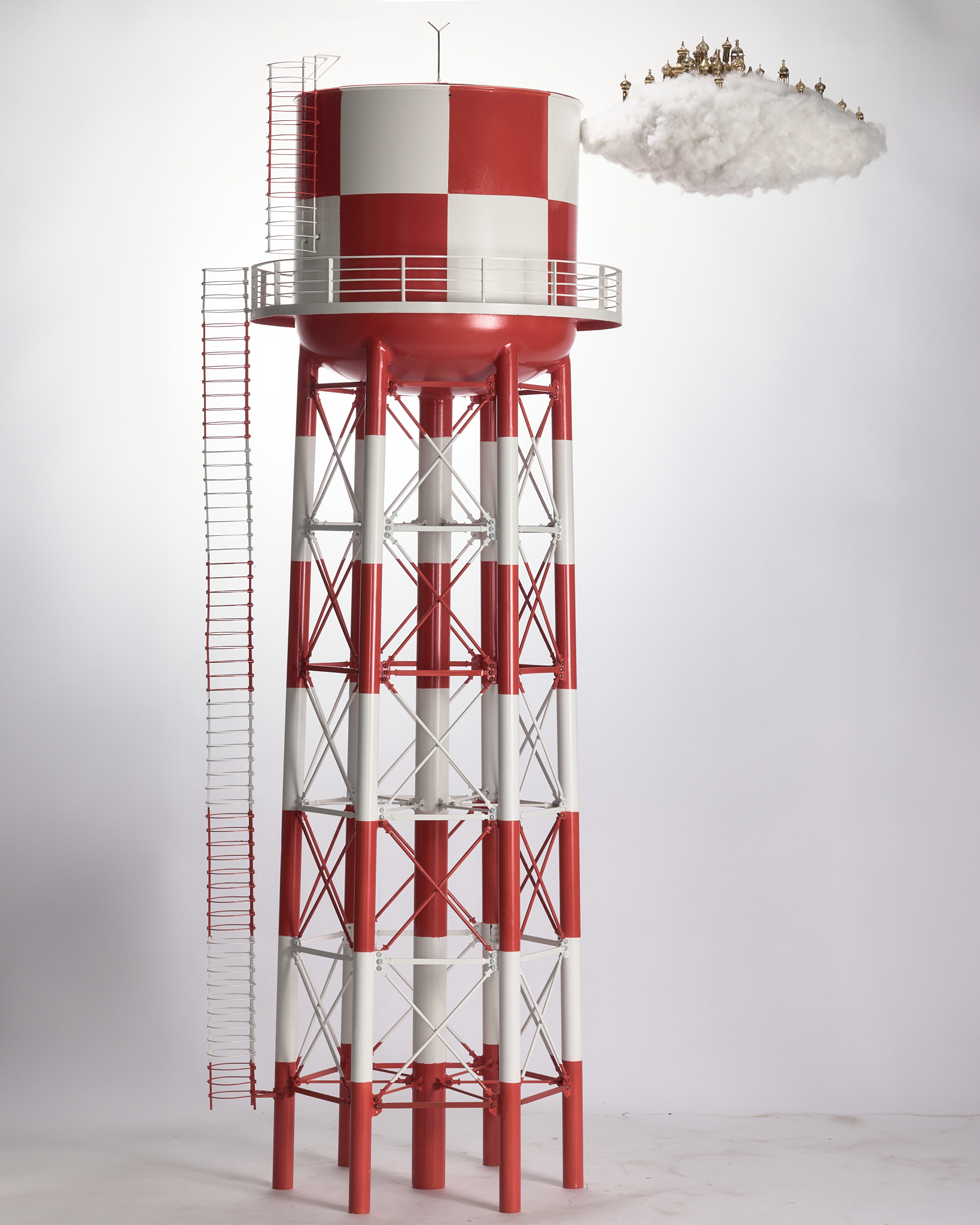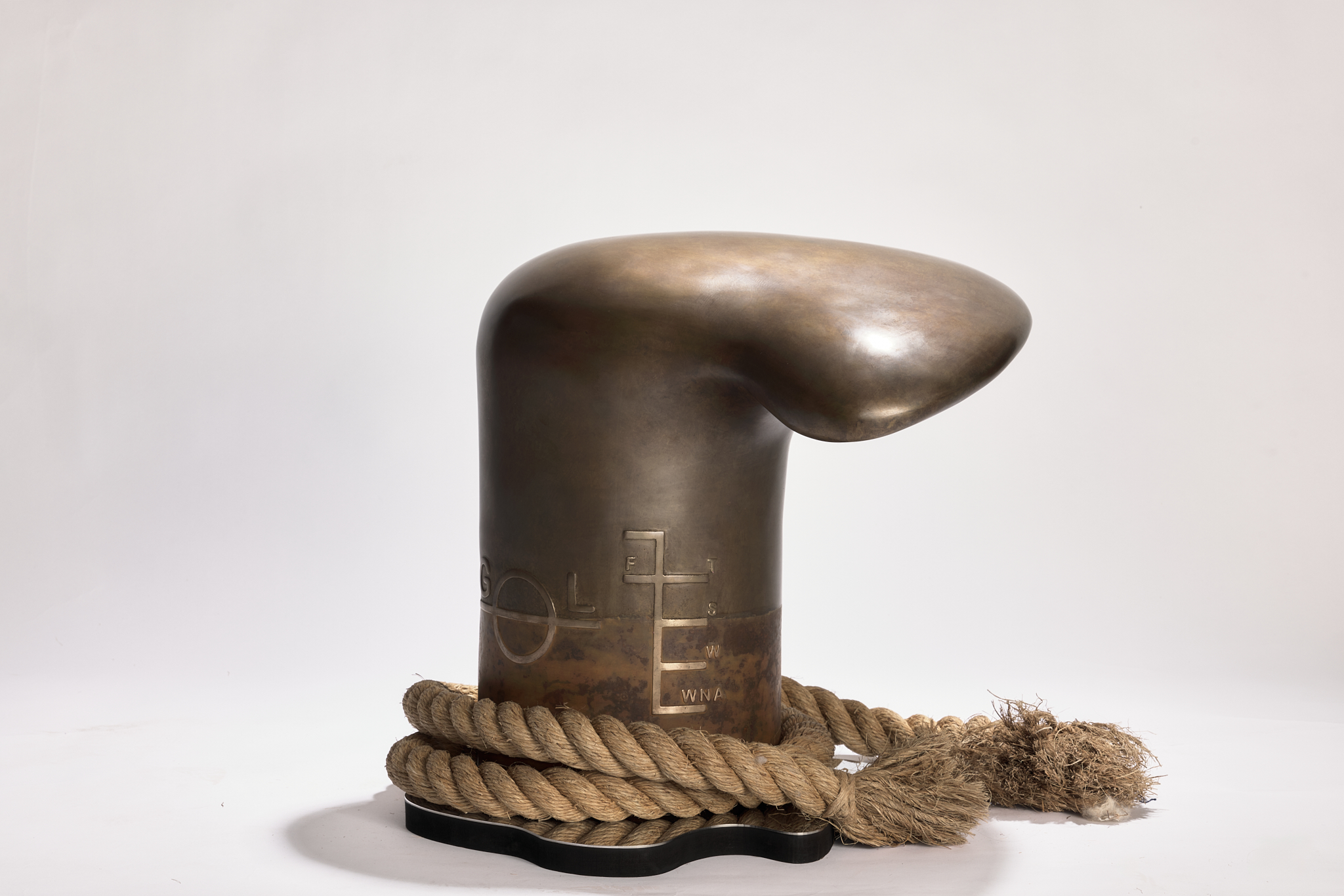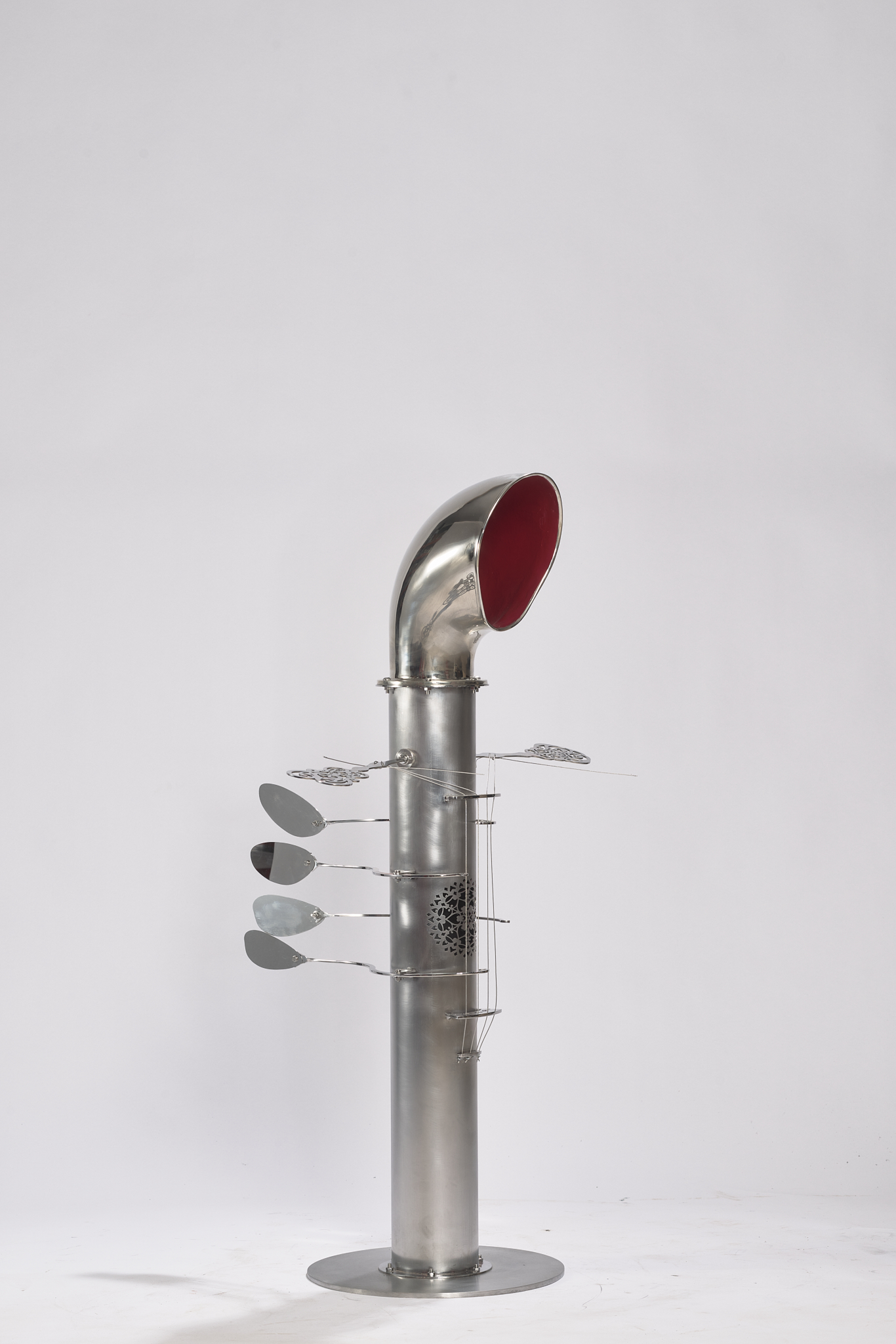Sianti Gallery on Thursday 9 May 2024 at 19.30 opens the solo sculpture exhibition of Stelios Gavalas entitled “Equal Line” curated by Yiannis Kolokotronis, professor of Western Art.
In the present exhibition, a charming approach is taken to sculpture works, which evoke spatial experiences, adopting the characteristics and qualities of architectural creation. These are works that recreate, define as “landmarks” or even delimit the space, always highlighting the place in which they are created.
One such is the workshop of Stelios Gavalas. Filled with tools it is still a microcosm in itself, reflecting the artist’s method of creation. The curator of the exhibition, Yiannis Kolokotronis, writes about the works in this apparent chaos: “… From 2020 onwards, Stelios Gavalas has reopened to a different exploration than the utopian scaffolding series of his neoclassical houses Athens of the 1930s where clouds, floating boats and floating states met. His new project is a combined effort to weave a web of experiences that transcend the boundaries of time and technology and to take the viewer on a journey of auditory sensation, memory and emotion that connects people. Five polished ships’ portholes lose their functional status and become conduits for a symphony of sounds. Also equipped such as the Musical Fougaros of Alimos with built- in speakers inside their cylindrical bodies, with strings and musical keys outside, echoing the sounds of the sea and the wind, amplifying the acoustic experience of the space, transforming their realistic context and altering the memory to be replaced by modern acoustic aesthetics.”
Gavalas’ works reduce sculpture to an experiential experience, where perception and senses are stimulated. And this is because the sculptures were sculpted based on the characteristics of the natural landscape, within which each of us emotionally harmonizes. That is why the curator of the exhibition notes that symbolism, metaphor, and allegory complement the tools in the sculptor’s workshop, emphasizing: “…Each of his works is a powerful antidote to contemporary visual mnemonic poetry. And the sea, as a central point of reference, becomes something more than a simple natural entity: it becomes a repository of shared experiences, feelings and reflections about the beauty and fragility of our natural world. And this is a political and social statement about the human journey through the lens of hope and optimism for a better world.”
Ultimately, the treatment of the sculptures’ materials, their scale, the relationship between full and empty, the play with light and sound, remove them from the category of exhibits, which are limited only to their observation by the viewer. They work more like a challenge for each of us to “experience” them, to listen to our own needs. Mainly to travel through the senses to the experiences that the works present. However, which aspect of them the viewer will follow is his choice…




